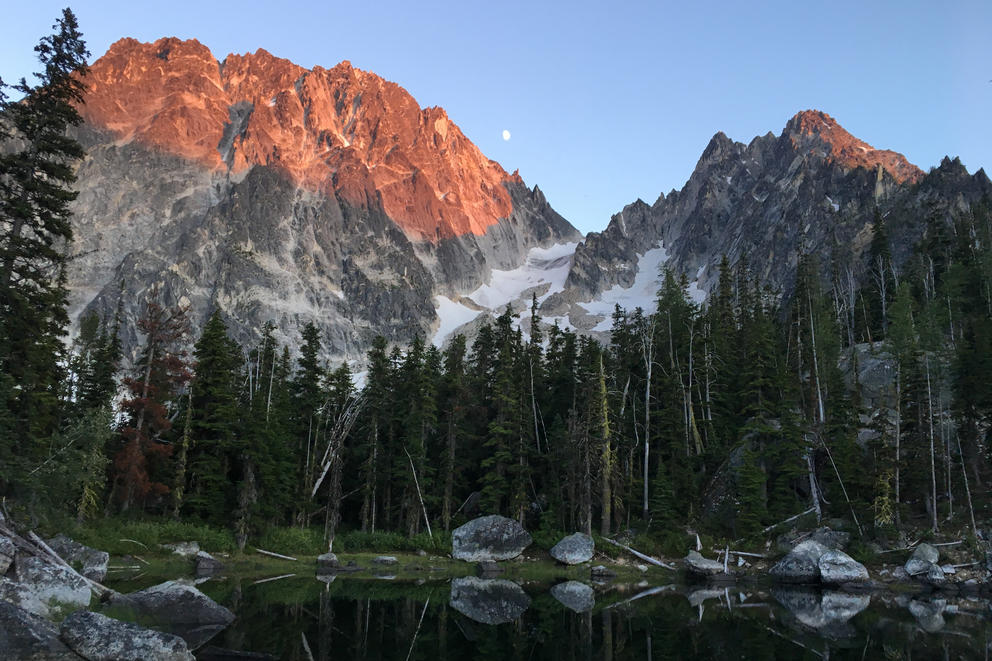Congratulations, jealousy, bewilderment: Usually, a mix of these emotions greets backpackers who score a coveted permit to The Enchantments. Trudging with heavy packs up a 2,000-foot chute of crumbling talus called Aasgard Pass, a constant stream of day hikers keeps sharing variations of these emotions to my crew of mostly first-time backpackers. Seattle’s Joshua Aplaca scored the permit on a first try as a birthday present for his partner, Neal Morton, and invited a few friends along (it’s the first real backpacking trip for most of the group). I’ve tried almost every year for the last nine years and never gotten it. This is only the second time I’ve been invited along with another party.
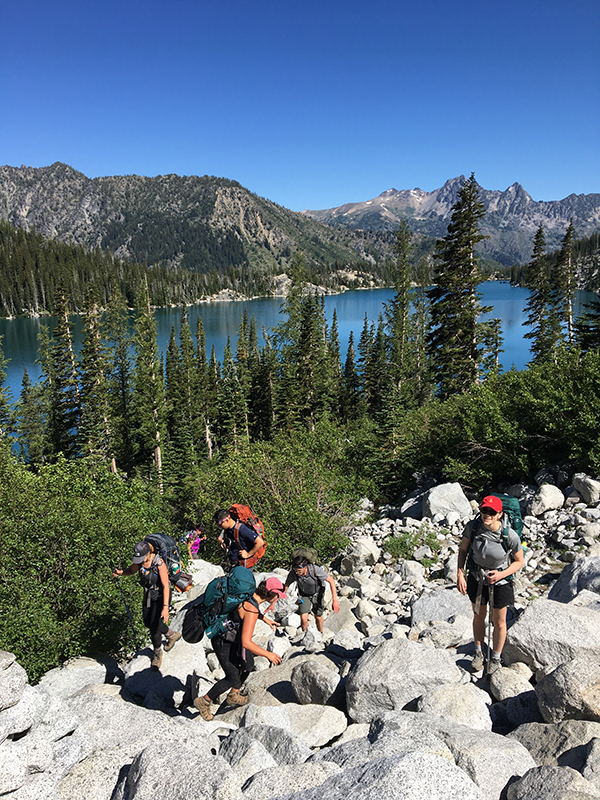
There’s a steady stream of day hikers who pass us, maybe 30 or so an hour. Two of them are wearing Viking helmets. More have had my experience than Joshua’s, meaning that rather than taking their time to huff up this hill, knowing that a campsite awaits, they’re forced to go up and back in a day, or over the top and out another way. Hiking all the way through is 18 miles and about 5,000 feet of elevation gain and 7,000 feet of loss — a monster day by anything but ultrarunning standards. One man from Spokane whose name I can’t catch shouts down at us that he’s enlisted his entire family — parents, brothers, aunts, uncles, infant cousins — to put names in the lottery every year. He’s come up with zilch in eight years of trying.
“I can’t believe you scored one on your first try,” he marvels. His girlfriend shares sour candy as she passes. He turns to his girlfriend and says, “I must be doing something wrong.”
He isn’t. In 1987, to mitigate damage from visitation, the U.S. Forest Service instituted a permit system to allow for no more than 60 people camping in The Enchantments per night during the peak season of mid-May to the end of October. Seventy-five percent of permits are awarded during the lottery, which hikers apply for the February and March prior; 25 percent are awarded day-of. Today, the permits remain as controversial as they are elusive.
As the era of Instagram hiking propagates an aspirational outdoor lifestyle that draws so many to the Pacific Northwest, The Enchantments are a jewel in the crown. But that popularity can precipitate a downfall. Propelled partially by appearances on popular accounts like That PNW Life, places like the Vance Creek Bridge — you know, where flanneled hipsters sit on sky-high railroad ties and dangle their feet over the edge — are now off-limits.
Management of these places — especially wildernesses like The Enchantments — digs into the issues (rampant growth, quality of life, climate change) that will define That Actual PNW life over the next several decades. To ensure the survival of zones like The Enchantments, access and restriction will need to exist in balance — a balance that might be hard to find.
Washington’s Cascades are blessed with plenty of granite wonderlands and picturesque tarns, but The Enchantments stand apart. White stone spires and domes streaked with snow encircle a high alpine basin, and emerald lakes and waterfalls out of a Norse legend decorate the valleys. That’s why Bill and Peg Stark, who were among the first climbers to visit the area in the 1940s, gave the places mythological names — Leprechaun, Sprite, and Gnome lakes. Others are merely apt descriptors: Perfection, Inspiration, Little Annapurna. It’s easy to see why people want to come here.
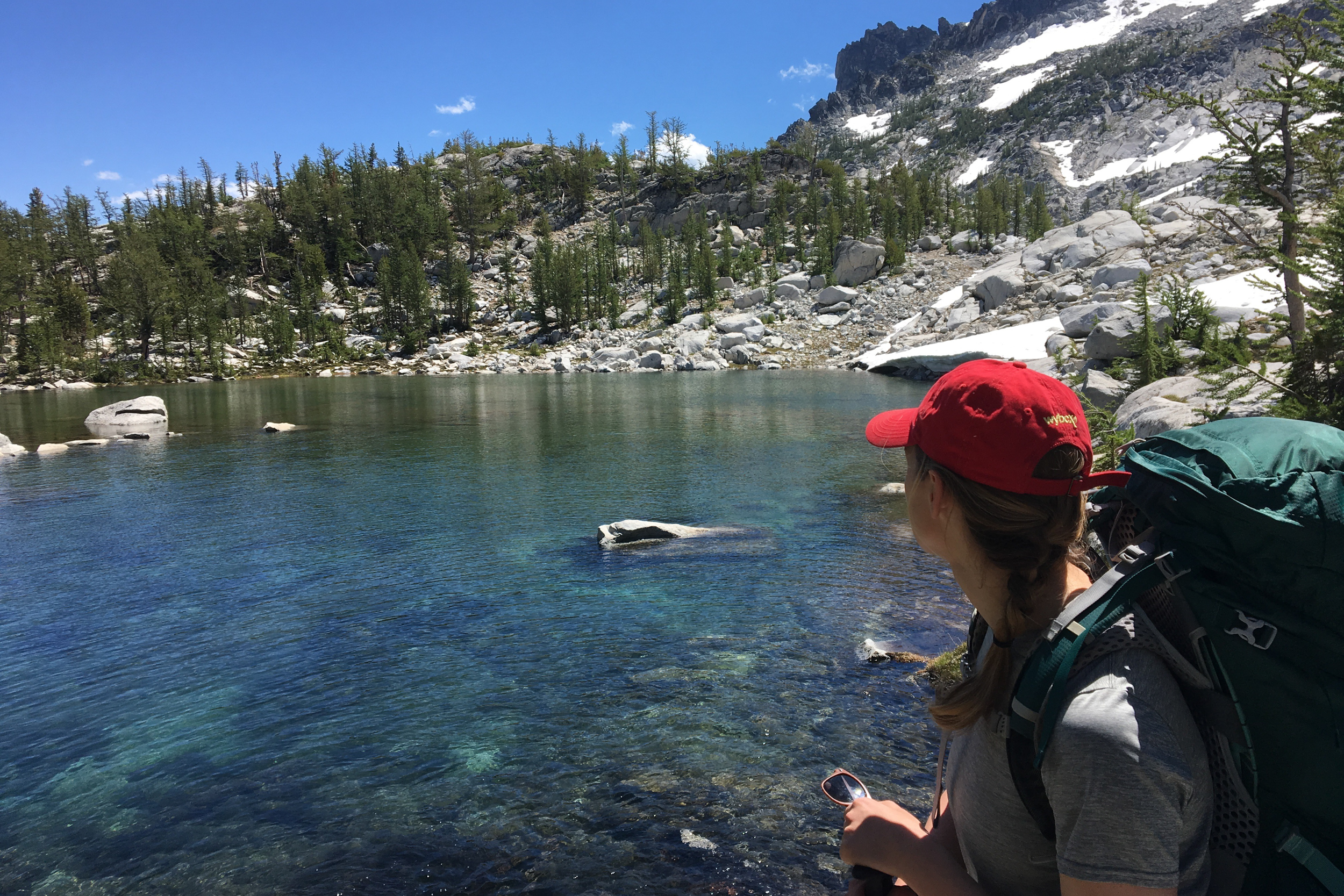
Lots of them try. According to Forest Service ranger Carly Reed, approximately 50,000 combined day and overnight users visited the Enchantments in 2016. A shade under that visited in 2017, but Reed thinks it would’ve been more if it weren’t for fires and related closures. (As I speak with Reed in mid-August, new fires were breaking out in the region this year, too. At press time, the largest —Cougar Creek Fire — burned nearly 42,000 acres and was 50 percent contained.) For comparison, the Forest Service recorded about 19,000 total visits in 2009.
Still, the permitting system has done some good. After its inception, mountain goats returned to the range, and vegetation and wildflowers came back.
But the gains have been slipping the last 6-7 years. Some of it is because, out of ignorance or apathy, many visitors come without a permit, despite a $200 per person penalty for being caught camping illegally. “Unfortunately, it’s way too common — just about every trip, rangers are citing people without overnight permits,” Reed says.
She blames much of the damage on the rise in day usage — people who don't have or need a permit who hustle in and out. The pace required from most people for such an effort means there’s barely time for more than sweaty hiking and quick photos. It seems inevitable that not everyone is prepared or able to care for such a delicate area.
“We are seeing an increase in vegetation degradation, new social trails, larger impacts on the landscape and an increase in human waste,” Reed says. “We have rangers in The Enchantments all summer long, and yet every day they are cleaning up toilet paper and piles of poop. I now have my rangers track how many piles of poop they bury. I could go on about the toilet/poop problem!”
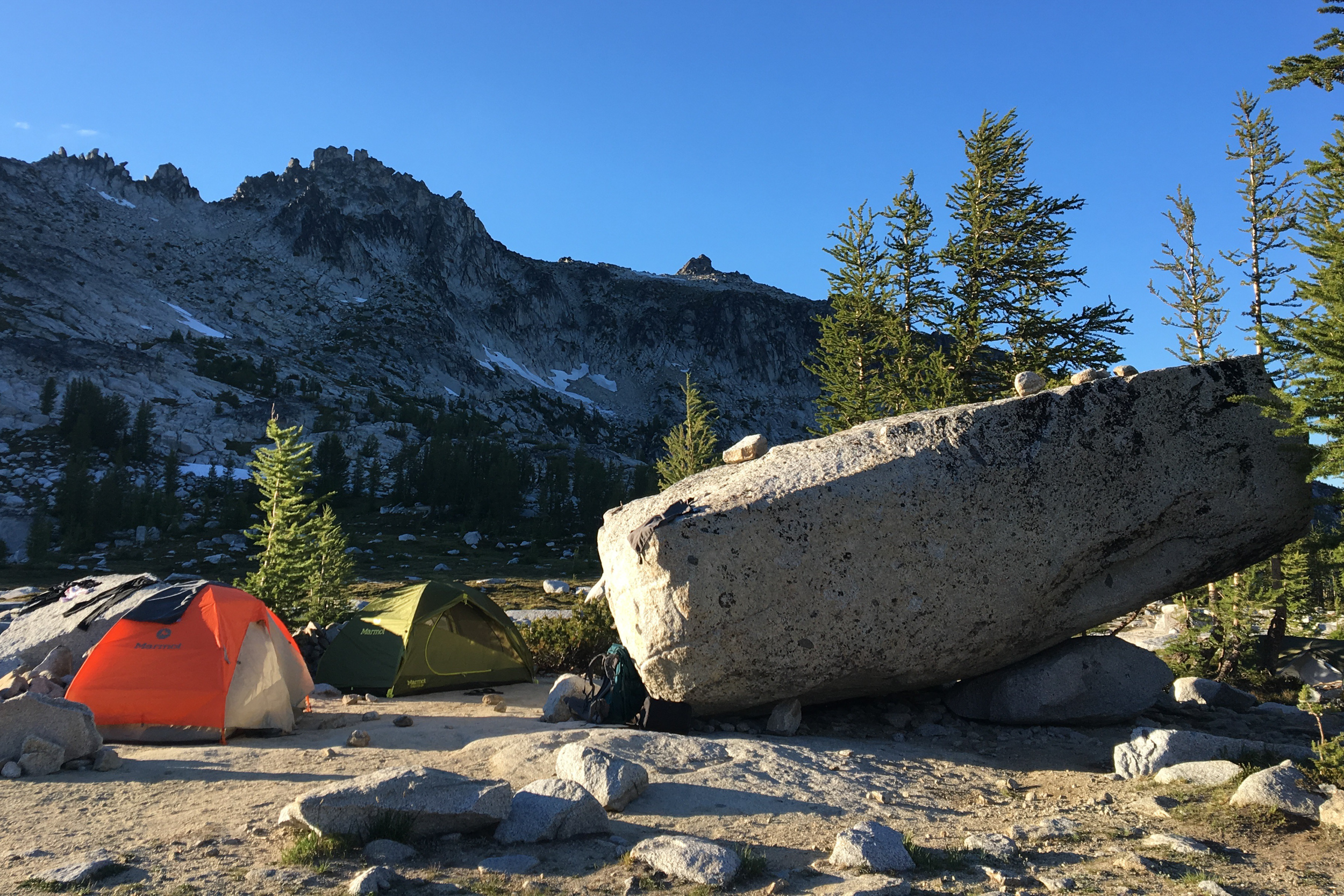
Katie Ferrell, a Virginian now living in Salt Lake City, was part of my crew. Even on an inaugural trip to the Cascades, she could identify the impact.
“It felt like I was in a fairytale, walking through Narnia waiting for Mr. Tumnus to pop up at any moment,” Ferrell says, but adds, "I don’t think there was a moment when no one was around.”
At the top of 7,800-foot Asgard Pass, instead of Mr. Tumnus, we met Chris Jameson, a Wenatchee native now living in Texas who climbs to The Enchantments most years with his father, David Ray Jameson Carr. A bum knee kept his father from making the final climb to the pass from Colchuck Lake, a teal pool dominated by the granite monolith of Dragontail Peak. Jameson trail-ran his way up, absorbing The Enchantments’ old charms and new perils alike.

“It is so incredible — Leprechaun Lake is maybe 60 degrees at the surface, I just had to dive in,” he said, brow sweat shining in the high-altitude glare. “But I also found a McDonald’s hash brown wrapper onshore. You need to talk to my dad. He’s been coming here from Wenatchee since he was a little kid. He really knows how it’s changed.”
I talk to David Ray Jameson Carr two weeks later. He’s visited The Enchantments on and off for more than 45 years, since he was at least 12 and before it was a federally protected wilderness. He remembers basking in its freezing lakes with his older sisters and their friends, returning with backpacks full of trout, and watching meteor showers reflecting off the lakes in the company of no one. He recalls a first trip with a birth father he didn’t know well: When the man started shooting at the chipmunks at Colchuck Lake, he remembers thinking they’d get in trouble. His father assured him nobody came up there, and he was right.
“I don’t remember seeing anybody — the trail was a lot rougher when we were younger; [the forest service] worked it over,” he said. “We had fires up there. And talk about fish: Back in the old days, you bring some salmon eggs and you couldn’t keep ‘em off. I just remember having so many to clean, since I was the youngest.”
Jameson Carr also remembers a close call on a sibling trip when he tumbled down a snowfield and went careening toward a partially frozen lake, unable to stop himself. “My backpack was so heavy I couldn’t move my arms, and I really thought I was going in for sure,” he says.
Carr slid to a stop before he did, but had he fallen in it’s possible he could’ve drowned, or succumbed to hypothermia or injuries with no one but his fellow minors to save him. Nowadays, search and rescue personnel visit the area frequently.
“Enchantments is our number one location for search and rescues, often associated with unprepared day hikers,” Reed says. “People underestimate the strenuous nature of the terrain. This is more common amongst the ‘through-hikers’” — people who attempt the 18-mile, over-the-top hike in one day.

More trash, more environmental impact, more injuries: The Enchantments are endangered, and Reed thinks she knows the root of all evil. Like democracy and cute animals before it, the mountain range is suffering from the misguided side-effects of social media — in particular Instagram, where glory shots of The Enchantment’s otherworldly scenes attract newbies more familiar with hashtag etiquette than hiking protocol. Some bring illegal dogs and leave toilet paper flowerettes everywhere in their wake. Reed notes the recent plague of selfies with the range’s pee-seeking mountain goats (they like to lap up the salt from human urine) as a particularly dangerous phenomena, and implores hikers to get the word out.
“Please, please, please stop posting photos on social media,” she says. “Or if you must, use general tags like ‘Alpine Lakes Wilderness’ instead of specific locations like Colchuck Lake.”
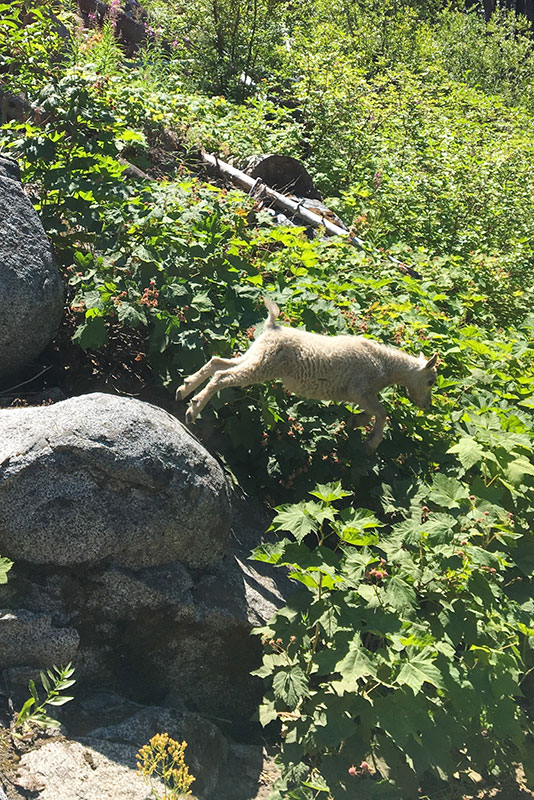
While scrolling through my fresh photos by headlamp, it’s hard to imagine not sharing some of them. I can cast no social-media stones: Anyone who dips into my feed will find a close-up of a scowling goat from my first trip here. Managing access to marquee wild places is a thorny issue with no real clear answers. Keeping out newcomers and day hikers often deprioritizes the communities that most need to exercise their rights to our wildernesses and keep those values alive back home. But the flood will always wash in folks who have the potential to damage and diminish the very thing that attracts us all.
Reed says wildland managers are looking for solutions. Environmental impact and user surveys could lead to some creative solutions. But the perpetual underfunding of public lands means they’ll need money to get anything done. At her most optimistic, Reed thinks they’ll be lucky to kick the whole process off by 2020.
“We did just complete a data analysis for the past decade of day and overnight use,” Reed says. “Short answer, it will be several years before any proposals come out.”
Until then, it’s hard to deny the transformative power of a few days in The Enchantments. I watch my companions go from a will-they-even-make-it late start up Aasgard to conscientious, leave-no-trace-obsessed backpackers who scamper from tarn to tarn, strategizing new backcountry gourmet recipes and joking about punishments for errant poo-ers. After visiting, some were comfortable with an even more restrictive permitting system.
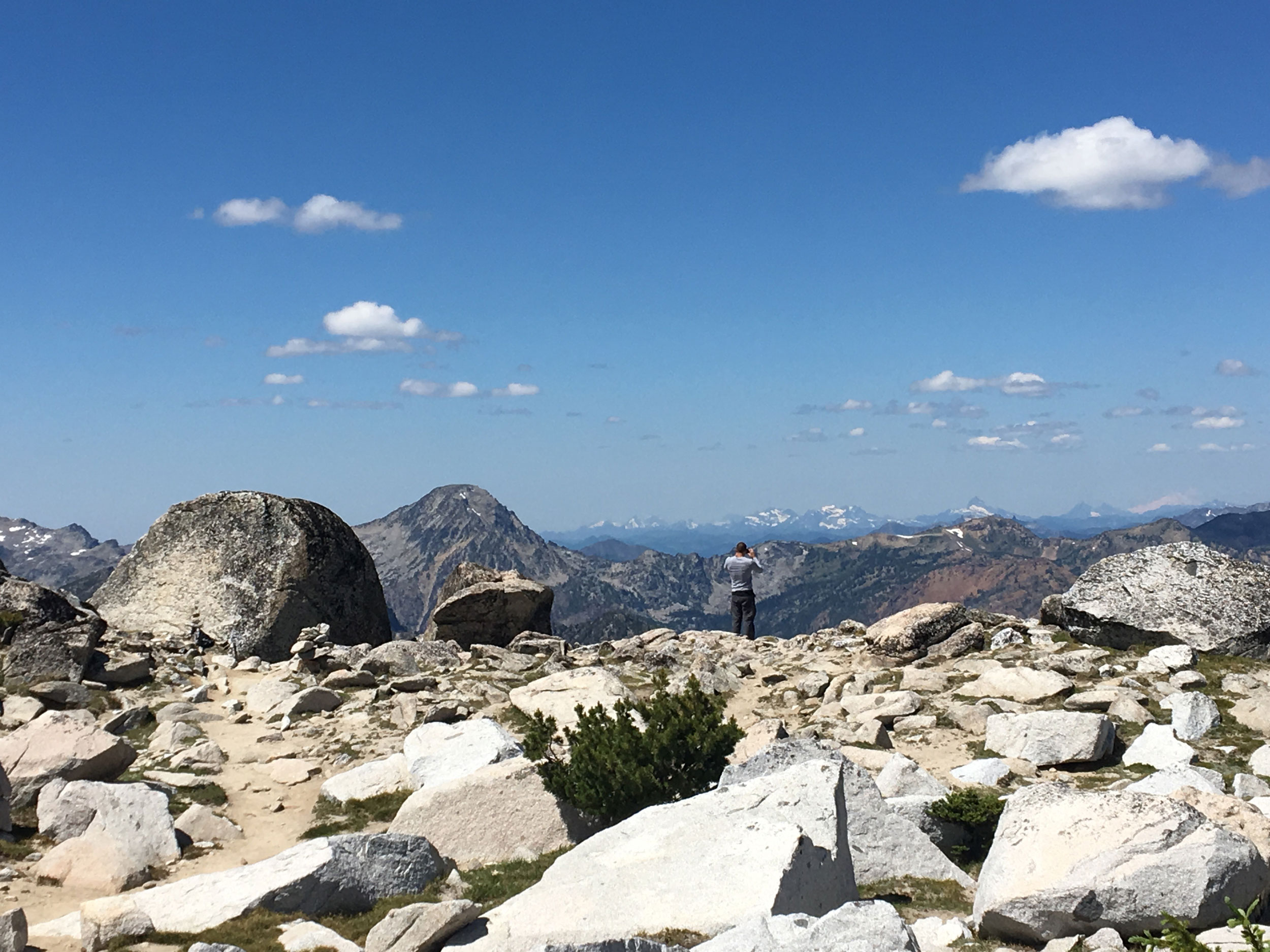
“If anything, I’d like to see the permit system expanded,” said Cassidy Follins, a Seattleite who works at the Pacific Science Center. “We saw more trash and evidence of people not following ‘leave no trace’ principles than I’d anticipated. Perhaps there’s a way to complete a small training before receiving a permit. I’d hate for that to become a barrier for people, though — especially in marginalized communities.”
Aplaca, the lucky duck who scored a first-time permit, would even sacrifice himself to let others experience The Enchantments.
“When speaking with people who have been trying for years to obtain a permit, I’d want this to be cycled through so it would give every person a chance,” he says. “Maybe people who have received permits in the past should have to wait a year before applying again.”
At our campsite on a granite peninsula jutting deep into glittering Leprechaun Lake, we dry off on beachside rocks and watch curious goat kids pop out like whack-a-moles from clumps of heather. For all the conga lines of through-hikers we saw huffing up Aasgard, the campsites are curiously empty; no parties share this lower valley, and our nighttime solitude is punctuated with a few of Jameson’s shooting stars arcing behind the famous razor profile of Prusik Peak.
Simultaneously wind-cooled and sun-kissed into utter sloth, I don’t have the heart to tell them the next day or two will include a knee-creaking 7,000-foot descent and end on dusty, shadeless set of interminable switchbacks.
Someone jokes that now that we’ve made it to The Enchantments, no one else should be allowed to further despoil its wild charms. But all of us acknowledge its gifts are too precious to hoard. “Five days without a phone is heaven,” says Follins.
“Every peak, every start of the hike for the day completely blew me away,” says Aplaca. “Being cut off from communication with the rest of the world was absolute bliss. I found that my body, mind, and spirit was able to relax without the distraction or noise stressing me out.”
“It was hard to wrap my brain around the fact that this place sits just a few hours’ drive from the hustle of Seattle.”



